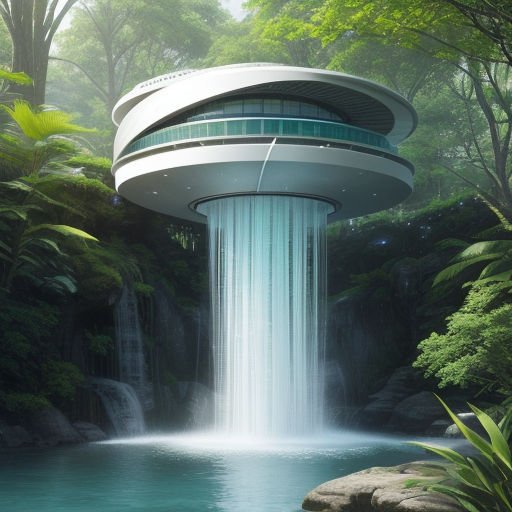When Buildings Breathe: How 70s Sci-Fi Dreamed Bio-Architecture
The Visionary Eco-Classic: Silent Running’s Enduring Impact
Released in 1972, Silent Running is a groundbreaking science fiction film that marries environmental concerns with imaginative storytelling. Set in a future where all plant life on Earth has been destroyed, the film follows Freeman Lowell, a botanist aboard a space freighter housing the last surviving forests. Silent Running’s narrative centers on living ecosystems preserved in massive domes, portraying an early vision of bio-architecture as a means to sustain life beyond Earth. This eco-sci-fi masterpiece challenges viewers to reflect on humanity’s relationship with nature, while pioneering concepts that resonate deeply in today’s sustainability and bio-architecture discourse.
Bio-Architecture in Silent Running: A Futuristic Green Haven
Silent Running introduces audiences to an innovative concept: integrating architecture with living plants to maintain Earth’s natural heritage in space. This bio-architecture, embodied by vast geodesic domes containing biodiverse forests, represents a symbiotic blend of biology and structural design. These domes are not just shelters, but vibrant ecosystems, echoing core principles of bio-architecture wherein buildings mimic or incorporate natural systems.
Design and Functionality of the Forest Domes
The film’s depictions of forest domes are more than visual spectacle—they serve practical purposes:
– Protect fragile plant species from the vacuum of space
– Facilitate self-sustaining ecological cycles
– Allow human caretakers to maintain and study Earth’s flora
These domes symbolize an early sci-fi interpretation of biophilic design, aiming to connect humans with nature, even in artificial environments.
Bio-Architecture’s Influence on Modern Sustainability
Silent Running’s portrayal of bio-architecture transcends fiction, inspiring real-world architectural innovations focused on eco-friendly design. Today, bio-architecture principles guide the creation of green roofs, living walls, and urban forests that improve air quality and biodiversity. The film’s vision aligns closely with current efforts to:
– Integrate natural ecosystems into urban planning
– Develop closed-loop systems mimicking natural cycles
– Enhance human well-being through connection to nature
This highlights how sci-fi, especially eco-sci-fi like Silent Running, can catalyze inventive approaches to environmental challenges.
The Ecological Message: A Prophetic Warning in Eco-Sci-Fi
Silent Running stands out in eco-sci-fi for its foresight and urgency regarding planetary destruction and conservation. Long before climate crises dominated headlines, the film presented a bleak scenario where Earth’s greenery is extinct, forcing humanity to rely on bio-architecture as a last refuge.
Environmental Themes Woven through Story and Setting
Key themes underscored in Silent Running include:
– The consequences of ecological neglect and industrialization
– The ethical imperative to preserve natural heritage
– The isolation and loneliness of stewardship over vanished ecosystems
By linking these themes directly with bio-architecture, the film advocates proactive measures to protect and restore Earth’s environment.
Silent Running as a Cultural Touchstone
Its legacy is evident in how Silent Running:
– Popularized environmental storytelling in cinema
– Influenced generations of filmmakers and environmentalists
– Sparked conversations about technology’s role in ecological balance
Such cultural resonance affirms Silent Running as foundational eco-sci-fi that continues to shape environmental awareness.
Character Study: Freeman Lowell and the Ethos of Bio-Architecture
At the heart of Silent Running is Freeman Lowell, whose dedication to the forest domes embodies the human dimension of bio-architecture—compassion and responsibility toward nature.
Lowell’s Mission and Moral Conflict
Lowell’s journey reflects profound ethical dilemmas:
– Defying orders to preserve the forests at all costs
– Confronting the loneliness of his eco-vigilante role
– Sacrificing personal safety to protect bio-architecture’s living legacy
His character symbolizes the urgency and passion required to maintain harmony between technology and environment.
Lowell’s Legacy in Environmental Storytelling
Portraying bio-architecture’s human face, Lowell inspired deeper empathy for environmental stewardship in audiences. His struggle encapsulates:
– The personal sacrifice behind sustainability efforts
– The clash between corporate interests and ecological values
– The hope embedded in preserving life’s diversity
Such narrative dimensions enrich the theme of bio-architecture with emotional depth.
Silent Running’s Technological Imagination: Beyond Just Green Spaces
The film embraces technology as both enabling and complicating environmental preservation. Bio-architecture structures are feats of space engineering, suggesting a future where human ingenuity supports ecological systems.
Robots and Technology as Environmental Aides
The iconic drones—Huey, Dewey, and Louie—serve as Lowell’s companions and helpers, illustrating technology’s role in maintaining bio-architecture. They:
– Manage routine tasks and monitoring
– Reflect a blending of artificial intelligence with natural care
– Highlight potential for robotics in sustainable living environments
This interplay anticipates modern explorations into green tech and automated environmental management.
Speculative Advances Rooted in Bio-Architecture
Silent Running speculates technologies that could soon be realized, including:
– Self-contained biomes for human survival beyond Earth
– Advanced environmental monitoring systems
– Integration of AI to optimize ecological health
These ideas continue to inspire cross-disciplinary innovation in architecture, ecology, and robotics.
Lessons from Silent Running: Bio-Architecture as a Blueprint for Future Cities
Examining bio-architecture in Silent Running offers actionable insights for developing sustainable habitats on Earth and beyond.
Applying Bio-Architecture Principles Today
Modern applications inspired by the film include:
– Designing urban spaces that incorporate natural elements for climate resilience
– Utilizing living walls and rooftop gardens to reduce carbon footprints
– Developing closed ecological systems for long-duration space missions
These practices echo the film’s vision, demonstrating bio-architecture’s expanding relevance.
The Broader Cultural and Environmental Impact
Silent Running continues to influence:
– Ecological policy dialogue, emphasizing habitat preservation
– Public consciousness about biodiversity loss and restoration
– Artistic depictions of nature-technology harmony
This enduring cultural footprint underscores bio-architecture’s potential as a guiding philosophy for sustainability.
Bridging Sci-Fi and Reality: Where Bio-Architecture Goes from Here
Silent Running’s speculative bio-architecture lays a foundation for future advancements blending ecology, technology, and human design.
Emerging Trends in Bio-Architecture
Current and future developments include:
– 3D-printed bio-structures mimicking natural forms
– Integration of smart sensors for real-time ecological data
– Biophilic urban design improving mental health and reducing pollution
These innovations build on concepts explored in Silent Running’s visionary domes.
Exploring More About Eco-Sci-Fi and Bio-Architecture
For readers eager to dive deeper, resources like the [Center for the Study of the Built Environment](https://www.csbe.org) offer insights on sustainable architectural practices. Exploring eco-sci-fi films alongside such research enriches understanding of how imagination drives real-world eco-innovation.
Engaging with this nexus of ecology and architecture invites anyone interested in a greener future to think creatively about their role in shaping it.
Final Reflections and Next Steps in Embracing Bio-Architecture
Silent Running remains a timeless beacon illustrating the transformative power of bio-architecture within eco-sci-fi storytelling. It reminds us that architecture is not merely about structures but about nurturing life itself. Its foresight challenges us to integrate nature intimately into our living spaces—whether here on Earth or beyond.
Embracing bio-architecture compels architects, scientists, and everyday people alike to rethink how we build and live sustainably. Now is the moment to champion innovative designs inspired by nature, inspired by the lessons of Silent Running, and inspired by the urgent need to protect our planet’s future.
Join the movement towards greener habitats by exploring bio-architecture projects near you, supporting sustainable building initiatives, or simply by advocating for city planning that prioritizes living ecosystems. Together, we can turn sci-fi visions into sustainable realities.














Post Comment